#Rock & Folk n°335
Text
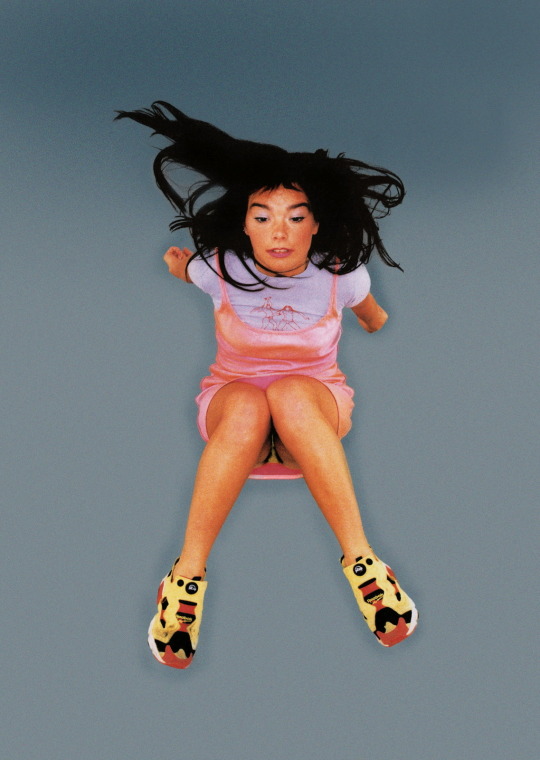
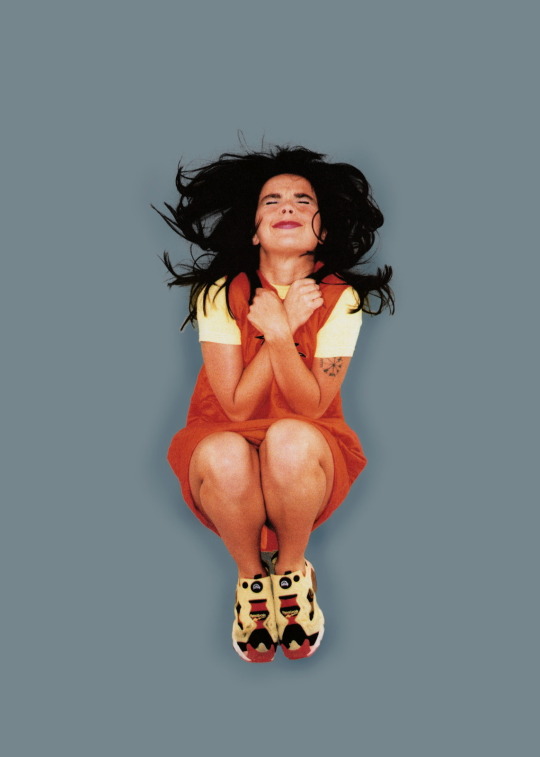
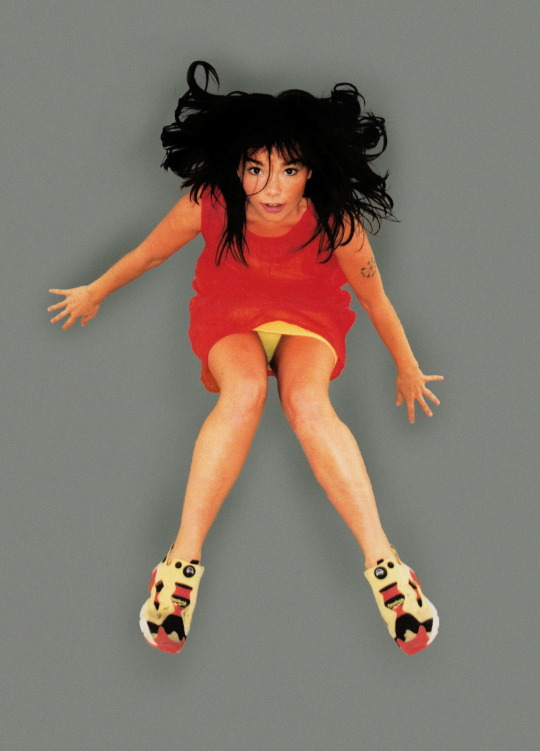

Björk for Rock & Folk n°335 (1995) Photography: Jean-Baptiste Mondino
1K notes
·
View notes
Text
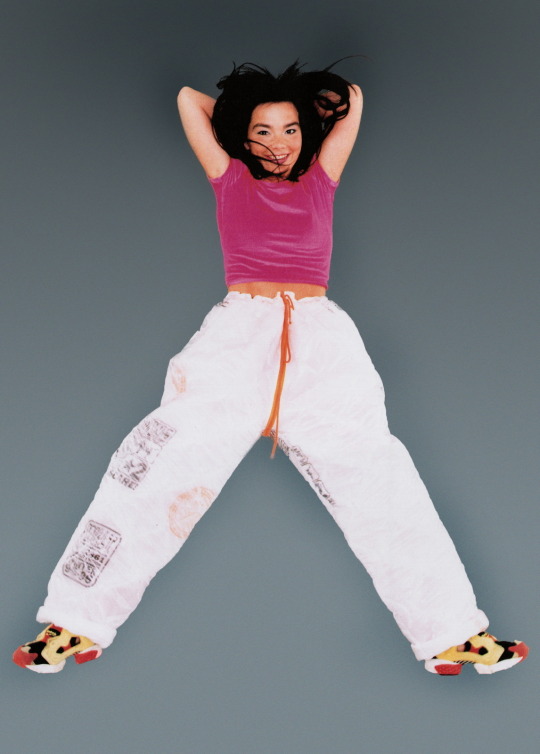
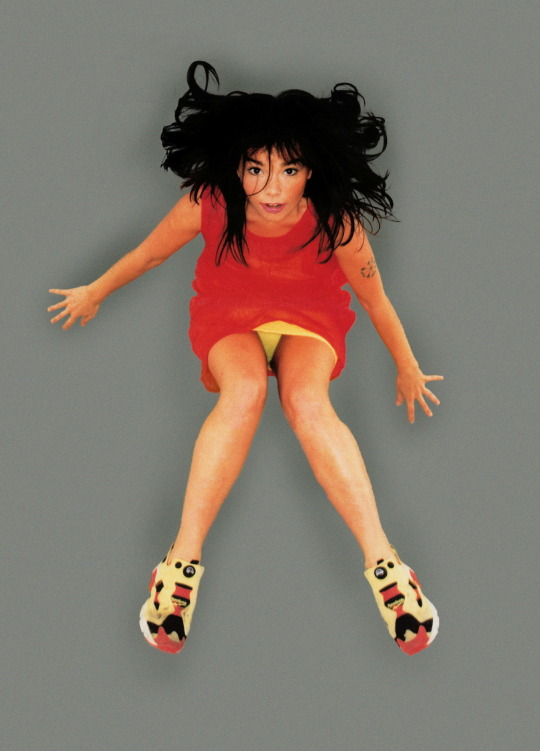



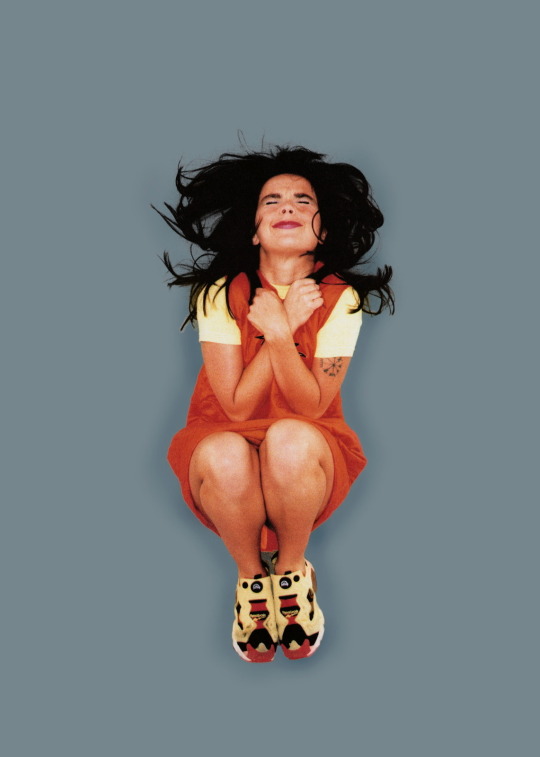
Björk for Rock & Folk n°335 (1995) photog. Jean-Baptiste Mondino
#bjork#bjork gudmundsdottir#rock & folk#magazine#photoshoot#celebs#90s#90s style#90s aesthetic#artist#singer#aesthetic
1K notes
·
View notes
Text

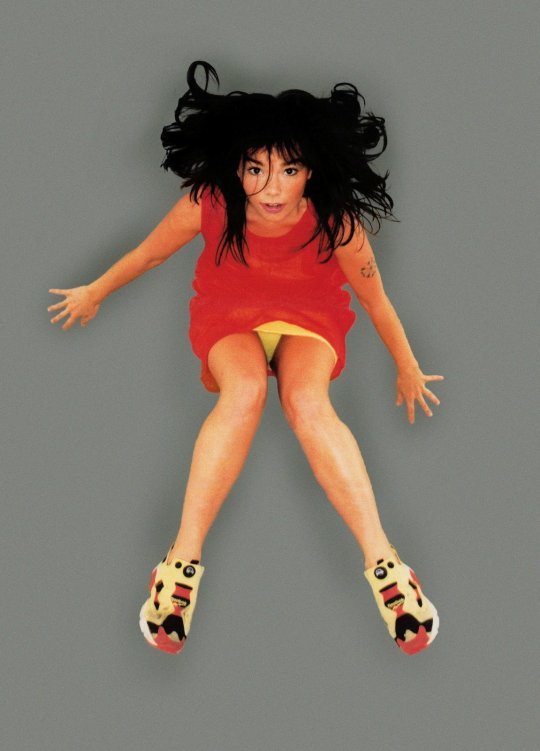
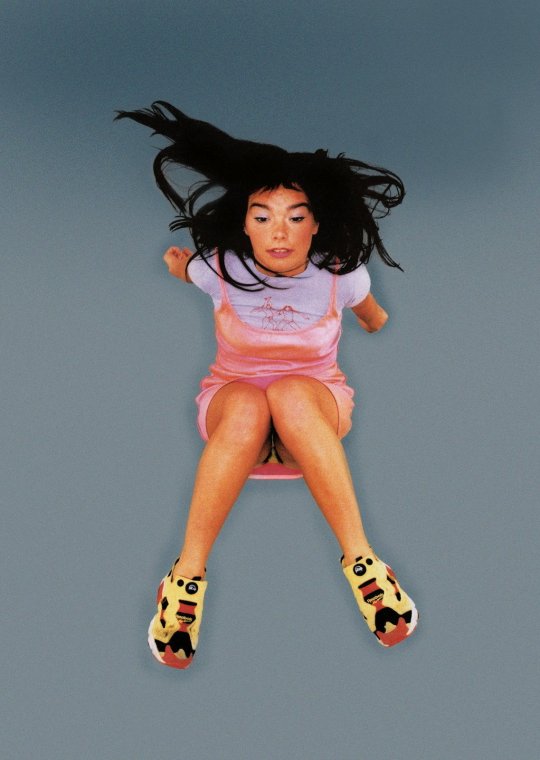
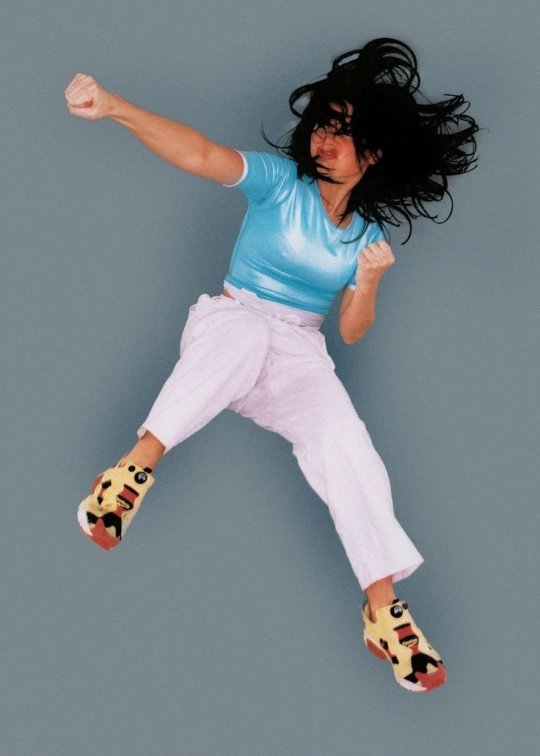
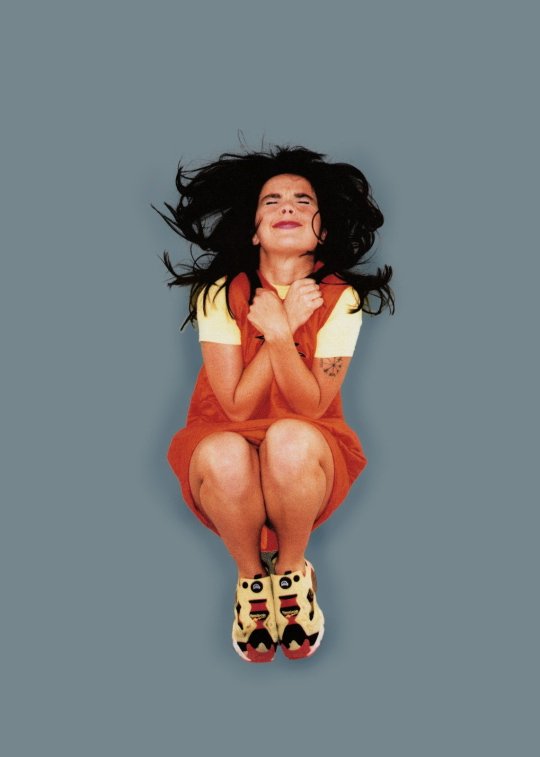

Björk by by Jean-Baptiste Mondino for Rock & Folk n°335 (1995)
28 notes
·
View notes
Text
Björk for Rock & Folk n°335 *ੈ (1995) *ੈ Photographed by Jean-Baptiste Mondino
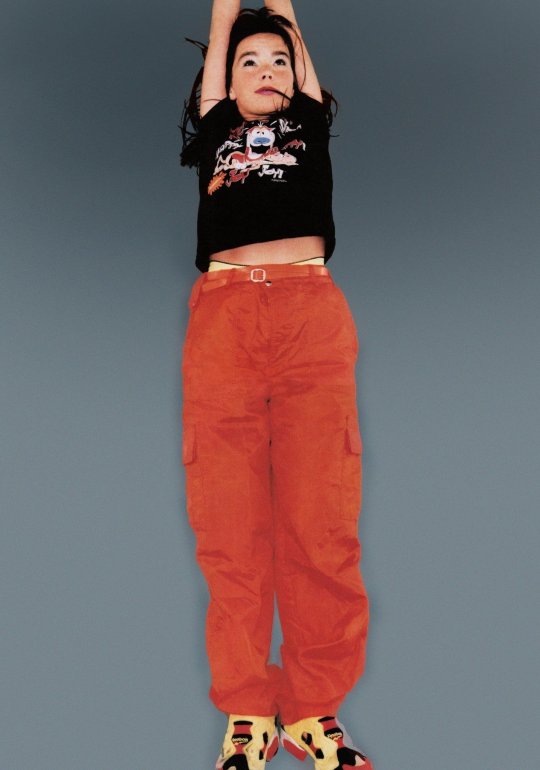

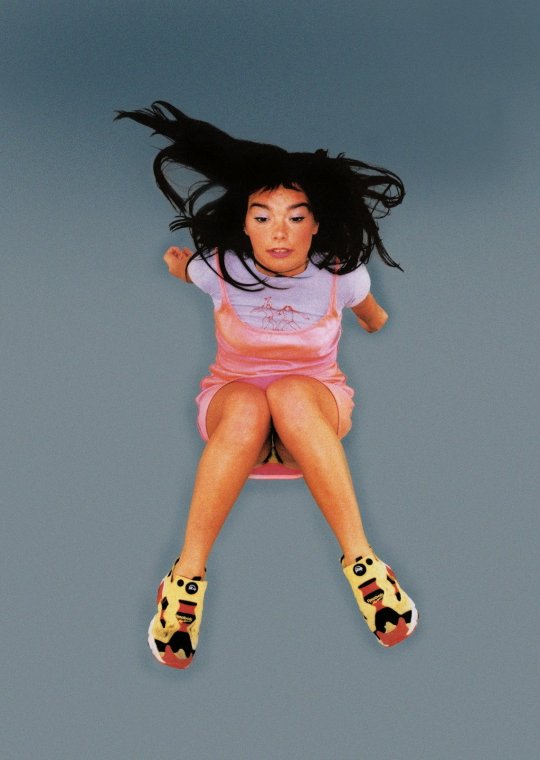
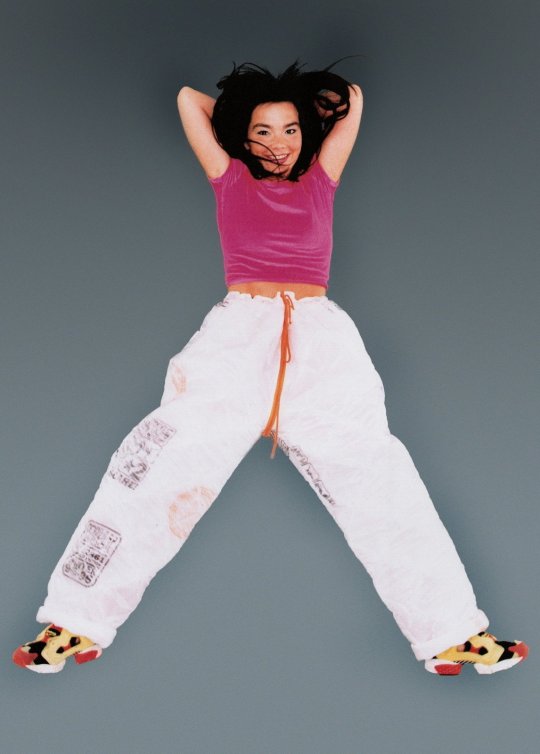
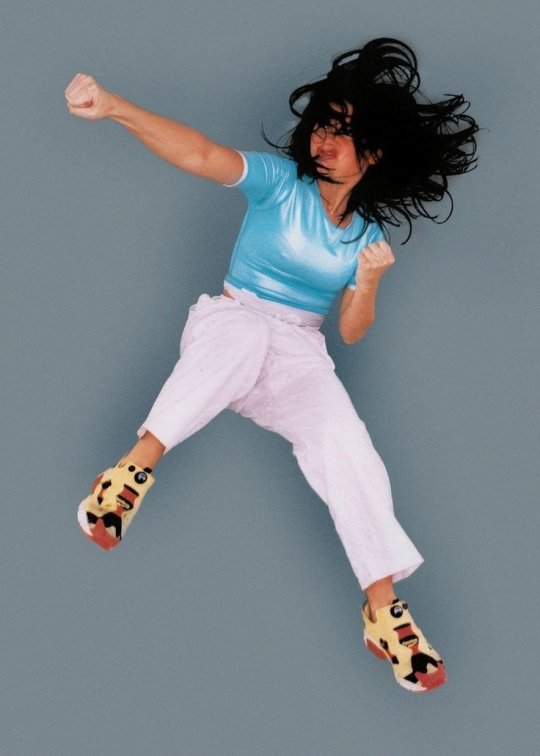

Björk for Rock & Folk n°335 (1995) *ੈ Photographed by Jean-Baptiste Mondino*ੈ
#bjork#oliver bjorkstrand#jean baptiste#y2k#2000s#2000s nostalgia#magazine scans#90s fashion#vintage#jean baptiste mondino
11 notes
·
View notes
Photo
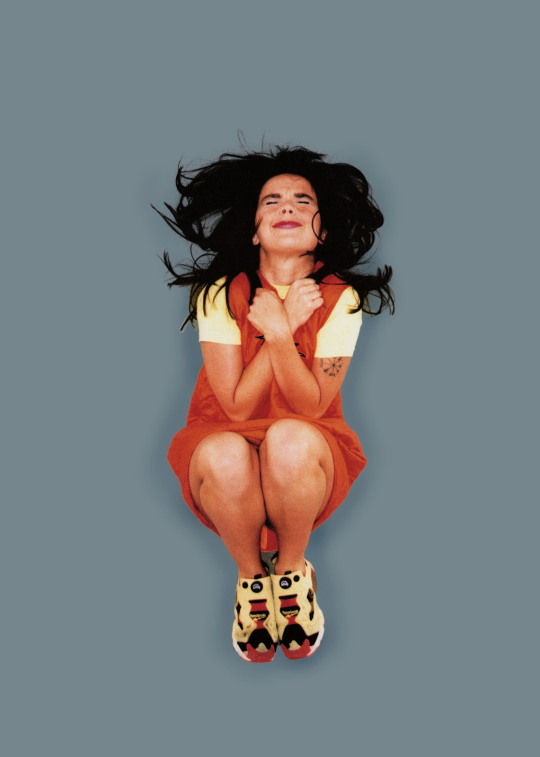
Björk photographed by Jean-Baptiste Mondino for Rock & Folk N°335 July 1995
1K notes
·
View notes
Text
〕I Just Wanna (Feat. Bow Anderson) ◀ 전기기타 관련 정보〕
전기기타 관련 정보 1. 전기기타 연주자 전기기타(Electric guitar)를 대중적으로 널리 알린 초창기의 대표적 뮤지션으로는 블루스(blues)의 티본 워커(T-Bone Walker, 1910~1975), 재즈(jazz)의 찰리 크리스천(Charlie Christian, 1916~1942), 리듬 앤 블루스(rhythm and blues)의 척 베리(Chuck Berry, 1926~2017)가 있고, 컨트리 음악(country music)과 웨스턴(western music) 장르에서는 멀 트레비스(Merle Travis, 1917~1983), 로큰롤(rock ‘n’ roll)에서는 버디 홀리(Buddy Holly, 1936~1959)를 꼽을 수 있다. 에디 반 할런(Eddie Van Halen, 1955~)의 신선하고 화려한 독자적 연주 기법은 1980년대에 접어들며 크게 사랑받았다. 그밖에도 비비 킹(B.B. King, 1925~2015)과 재즈 기타리스트 조지 벤슨(George Benson, 1943~), 비틀스(The Beatles)의 존 레넌(John Winston Ono Lennon, 1940~1980)과 폴 매카트니(Sir James Paul McCartney, 1942~) 등은 세미어쿠스틱 아치톱 기타(Semi-acoustic archtop guitar)를 즐겨 연주했던 대표적인 뮤지션이다. 『롤링 스톤』(Rolling Stone), 『기타 월드』(Guitar World), 『타임』(Time) 등 영어권의 주요 잡지에서는 종종 최고의 기타리스트 명단을 선정해 발표하고 있다. 그중 대표적으로 『롤링 스톤』에서 2011년에 개정판으로 내놓은 “최고의 기타리스트” 명단에서, 상위를 차지한 다섯 명의 기타리스트는 지미 헨드릭스(Jimi Hendrix, 1942~1970), 에릭 클랩튼(Eric Clapton, 1945~), 지미 페이지(Jimmy Page, 1944~) 키스 리처즈(Keith Richards, 1943~), 제프 벡(Jeff Beck. 1944~)이었다. 찰리 크리스천(Charlie Christian, 1916~1942) 초창기의 재즈기타리스트 찰리 크리스천 1936년 세미어쿠스틱 아치톱 기타 ES-150을 연주하기 시작한 찰리 크리스천은, 1939년부터 베니 굿맨(Benny Goodman, 1906~1986)의 6중주 밴드에 참여하면서 명성을 얻었고, 특히 ES-150 모델의 인지도를 높이는 데 크게 기여한 것으로 평가된다. 웨스 몽고메리(Wes Montgomery, 1923~1968) 웨스 몽고메리(1966) 미국의 대표적인 재즈 기타리스트 웨스 몽고메리는 엄지손가락 측면을 활용한 특유의 피킹(Picking) 연주법으로 잘 알려져 있다. 특히 미국 재즈 음반 산업에서 중요한 역할을 했던 리버사이드 레코드(Riverside Revords)와의 계약 기간(1958~1964) 동안 몽고메리가 발매한 초창기 앨범들은, 후대 연주자들에게 많은 영향을 끼쳤다. 쳇 앳킨스(Chet Atkins, 1924~2001) 1950년대부터 전기기타 연주 기법은 뛰어난 연주자들을 중심으로 점차 확장되기 시작했다. 1950년대 중반 미국 컨트리 음악의 한 장르인 ‘내슈빌 사운드’(Nashvile sound)를 창시한 쳇 앳킨스는, 자신의 독자적인 음악 활동 이외에도 엘비스 프레슬리(Elvis Presley, 1935~1977), 에벌리 브라더스(Everly Brothers, 1951년 결성) 등과의 공동 작업을 통해, 이른바 ‘내슈빌 컨트리 피킹’(Nashvile country picking)이라는 자신만의 독특한 연주 스타일을 확립했다. 내슈빌 사운드는 미국 중북부 테네시 주에 위치한 도시 내슈빌에서, 주요 음반 제작사들의 주도로 개척된 장르로 알려져 있다.1959년 발표한 앨범 [미스터 기타](Mister Guitar)를 계기로, ‘미스터 기타’라는 별명으로 널리 알려졌다. 2002년에는 로큰롤 명예의 전당(Rock and Roll Hall of Fame)에 헌액되었다. 척 베리(Chuck Berry, 1926~2017) 20대 시절의 척 베리(1957) 미국 로큰롤 초창기의 개척자 중 한 명으로 손꼽히는 척 베리는, 전기기타 연주에서 특히 인상적인 활약을 펼친 인물이다. 1955년 발표된 척 베리의 데뷔곡 “Maybellene”은 로큰롤의 원점으로 여겨질 만큼 전기기타 역사에서 중요한 위치를 차지한다.다리를 구부리고 마치 오리의 걸음을 연상시키는 자세로 연주하는 이른바 ‘덕 워크’(Duck Walk)는, 그를 상징하는 특유의 무대 연출이 되기도 했다. 척 베리는 2003년 『롤링 스톤』에서 발표한 “위대한 100명의 기타리스트”에서 6위, 2011년 같은 잡지에서 새롭게 내놓은 개정판에서는 7위에 올랐다. 또한 그의 1958년 작품 “Johnny B. Goode”는, 2008년 역시 같은 잡지에서 선정한 “역사상 가장 위대한 기타곡 100편”에서 1위를 차지했다. 지미 헨드릭스(Jimi Hendrix, 1942~1970) 지미 핸드릭스(1967) 로큰롤 명예의 전당에서 “록음악 역사상 가장 위대한 연주자”로 칭송받는 지미 헨드릭스(본명 James Marshall Hendrix)는 록과 블루스, 소울 장르를 결합한 기타 연주로 명성을 얻었다. 헨드릭스는 펜더(Fender) 사의 스트라토캐스터(Stratocaster) 모델이 오늘날 록 기타의 대명사로 정착하게 된 중요한 계기를 제공했다. 그가 이 기타를 사용하기 전까지 주요 뮤지션이 스트라토캐스터를 사용하는 사례는 거의 없었다고 한다.왼손을 지판에 두고 오른손으로 현을 뜯어 연주하는 일반적인 방식과 반대로, 기타를 뒤집어 왼손과 오른손의 역할을 바꾸어 연주하는 왼손잡이 기타리스트였던 헨드릭스는, 일부 코드 연주에서 변칙적인 운지법(fingering) 패턴을 만들기 위해 오른손의 엄지손가락을 활용하기도 했다.이처럼 스트라토캐스터를 활용한 핸드릭스의 변칙적인 연주 기법 시도는, 같은 악기를 사용하는 후대의 록 기타 연주자들에게도 많은 영향을 끼쳤다. 피드백 주법(Feedback)의 고수로 회자되는 그는 본격적으로 데뷔하기 이전부터 피드백을 사용했다고 전해진다.1967년 데뷔앨범 [Jimi Hendrix Experience]에 이어 같은 해 연말에 발표한 2집 [Axis: Bold as Love], 그리고 다음 해 발표한 3집 [Electric Ladyland]까지, 30년이 채 안 되는 짧은 생애 동안 그가 남긴 정규 음반은 이렇게 석 장 뿐이지만, 그가 남긴 연주자로서의 업적과 전설들은 오늘날의 음악계에도 여전히 큰 영향력을 행사하고 있다. 지미 페이지(Jimmy Page, 1944~) 지미 페이지(1973) 영국인 기타리스트 지미 페이���는, 록 밴드 레드 제플린(Led Zeppelin, 1968~1980)의 리더이자 프로듀서이기도 하다. 영국의 포크(folk)와 컨트리 음악에 영향을 받은 한편, 블루스 음악을 기본으로 한 연주가 특징이다. 어쿠스틱 기타 연주에서도 뛰어난 기교를 선보였다.지미 페이지는 무대 위에서 기타를 바이올린 활로 연주하거나, 개방현을 장화음 상태로 조율하는 오픈 튜닝(Open tuning)을 쓰는 등, 실험적인 기법으로 연주를 시도하기도 했다.1971년 발매된 레드 제플린의 4집 앨범에 수록된 “Stairway to Heaven”은 어쿠스틱 기타를 연상하게 하는 서정적인 도입부에 이어 강렬한 하드록의 경계까지 넘나드는 극적인 전개로, 특히 지미 페이지의 연주 기교가 집약된 대표작으로 손꼽히는 작품이다.아티스트가 사용하는 기타를 재현하려는 의도로 1995년 깁슨 사에서 내놓은 첫 번째 시그니처 레스 폴(Signature Les Paul) 악기는, 1958년에 제작된 ‘레스 폴 No.1’을 복제한 지미 페이지 모델이었다. 이 기타의 피크 가드(pick guard)에는 페이지의 사인이 새겨져 있다. 기타의 어깨 스트랩(strap)을 길게 늘어뜨려 악기를 낮게 두고 허리를 편 상태로 연주하는 특유의 연주 자세가 유명하다. 키스 리처즈(Keith Richards, 1943~) 키스 리처즈(1973) 1962년 결성된 영국의 록 밴드 롤링 스톤스(Rolling Stones)에서 기타리스트로 활약하는 키스 리처즈의 연주는, 롤링 스톤스 음악의 변천사와 맥락을 함께해 왔다. 그의 본격적인 연주 스타일이 확립된 시기는 대략 1960년대 후반기로 보인다. 밴드 결성 초기부터 주로 리드 기타(Lead guitar)를 담당했던 리처즈는, 1969년 믹 테일러(Mick Taylor, 1949~)가 새로운 멤버로 영입되어 기타 솔로를 전담하게 된 이후에는 리듬 기타(Rhythm guitar) 위주로 연주하게 되었다. 1974년 테일러가 밴드를 탈퇴하고, 새로운 기타리스트로 론 우드(Ron Wood, 1947~)가 영입되면서, 스타일이 유사한 테일러와 우드가 함께 연주할 때에는 리드 기타와 리듬 기타의 경계를 서로 넘나들며 독특한 역할 설정을 했다고 알려진다. 오늘날까지 롤링 스톤스의 이른바 ‘스톤스 사운드’를 구축해 온 핵심에는 리처즈가 있었다고 할 만큼, 리처즈의 기타 연주는 기교의 관점을 넘어서는 개성으로 후대의 기타리스트들에게도 많은 영향을 끼쳤다.60년대에 주로 깁슨 기타를 사용했던 리처즈는, 70년대에 접어들면서 펜더의 텔레캐스터(Telecaster)를 사용하기 시작했다. 현재는 깁슨 ES-335 기종을 주로 연주하는 것으로 알려져 있다.롤링 스톤스는 1965년 발표한 싱글 “Satisfaction”으로 빌보드 싱글차트의 첫 1위에 올랐는데, 이 곡은 특히 리처즈가 반복해 연주하는 기타 리프로 유명하다. 제프 벡(Geoffery Arnold "Jeff" Beck, 1944~) 제프 벡(1979) 10대 초반부터 로큰롤에 흥미를 갖고 기타 연주를 시작한 영국인 기타리스트 제프 벡은, 일찍이 학교 친구들과 밴드를 결성해 지역 클럽의 무대에 서며 음악 활동을 했다. 1962년에는 같은 학교에 재학 중이던 지미 페이지를 알게 되어 교류했고, 1965년에는 에릭 클랩튼이 탈퇴한 밴드 야드버즈에 합류해 활약했다.1967년에는 보컬 로드 스튜어드(Rod Stewart, 1945~), 리듬 기타를 담당한 론 우드(Ron Wood, 1947~)와 함께 ‘제프 벡 그룹’(The Jeff Beck Group)을 결성했다. 한편 그는 일찍이 60년대부터 피드백 연주법을 사용했던 연주자로도 잘 알려져 있다.1972년부터 약 2년 동안 활동한 밴드 ‘벡, 보거트 앤 어피스’(Beck, Bogert & Appice)에서 제프 벡은 미국인 베이시스트 팀 보거트(Tim Bogert, 1944~), 드러머 카민 어피스(Carmine Appice, 1946~)와 함께 당대 최고의 록 트리오라는 평가를 받기도 했다. 제프 백의 전환기 작품으로 손꼽히는 앨범 [flash](1985) 중에서 수록곡 “Escape”는 그래미상 최우수 록 연주상을 수상했고, 1989년 발매된 앨범 [Jeff Beck's Guitar Shop] 역시 같은 상을 수상했다. 이 시기를 즈음해 제프 벡의 연주는 일렉트로니카(Electronica), 테크노 록 사운드에 접근하는 경향을 보이기 시작했다. 2016년에는 데뷔 50주년 앨범을 발표했다. 에릭 클랩튼(Eric Clapton, 1945~) 에릭 클랩튼(1974) 영국 출신의 기타리스트이자 싱어송라이터 에릭 클랩튼은, 1960년대 록 밴드 야드버즈(Yardbirds, 1963~1968, 1992), 크림(Cream, 1966~1968), 블라인드 페이스(Blind Faith, 1969) 등에서 활동하며 기타리스트이자 보컬, 작사가, 작곡가로 명성을 쌓았다.1970년 에릭 클랩튼은 미국으로 건너가 데릭 앤 더 도미노스(Derek and the Dominos)를 결성했다. 이 해 11월에 발매된 앨범 [layla and other assorted love songs]은, 에릭 클랩튼의 최고 명반으로 손꼽히는 작품이기도 하다.이후 여러 밴드의 세션 기타리스트로 참여하며 솔로 활동을 시작한 에릭 클랩튼은, 밥 말리(Bob Marley, 1945~1981)의 “I Shot The Sheriff”를 커버한 곡으로 1974년 9월 14일자 빌보드 싱글차트 1위에 올랐다. 그의 별명인 ‘슬로핸드’(Slowhand)는 1977년 발매된 솔로 앨범 타이틀이기도 하다.그는 밴드 ‘야드버즈’와 ‘크림’ 시절 로큰롤 명예의 전당에 헌액된 후, 솔로 활동으로도 이곳에 이름을 올렸다. 현재까지 로큰롤 명예의 전당에 세 차례 입성한 뮤지션은 에릭 클랩튼이 유일하다. 2. 전기기타 연주곡 “Johnny B. Goode” (CD 트랙 1번) 앨범 Colour Collection연주 Chuck Berry로큰롤의 개척자로 손꼽히는 척 베리의 1958년 싱글 “Johnny B. Goode“는 전기기타 연주에서는 물론 팝의 역사에서도 중요성이 높은 곡으로 평가된다. 이 곡 도입부의 특징적인 기타 연주는 이후 다른 곡에도 다수 인용되었고, 비틀스, 비치 보이스, 엘비스 프레슬리를 비롯한 수많은 뮤지션들이 저마다 이 곡을 재해석해 연주했다.한편 이 곡의 오리지널 연주는 1977년에 우주선 보이저(Voyager) 1호와 2호 발사 당시 외계 생명체를 향해 녹음된 메시지 레코드(Voyager Golden Record)에, 록을 대표하는 작품으로 채택되어 실리기도 했다.“Purple Haze” (오리지널 CD 트랙 3번) 앨범 Are You Experienced연주 Jimi Hendrix Experience지미 헨드릭스의 1967년 싱글 “Purple Haze”는 그의 데뷔 앨범에 수록된 작품으로, 베이시스트 노엘 레딩(Noel Redding, 1945~2003), 드러머 미치 미첼(Mitch Mitchell, 1947~2008)과 함께 결성한 밴드, 지미 헨드릭스 익스피리언스(Jimi Hendrix Experience)의 데뷔작 중 하나이기도 하다. 이 곡은 인트로에 이어 사용된 이른바 ‘헨드릭스 코드’(Hendrix chord) 화음으로도 유명하다. 딸림7화음과 증2도를 합쳐놓은 형태의 이 화음은, 1960년대 호레이스 실버(Horace Silver, 1928~2014)를 비롯한 재즈 연주자들 사이에서 널리 활용되었다. 기존에 록 장르의 연주에서는 거의 사용되지 않았던 이 화음은, 헨드릭스의 이 작품을 계기로 폭넓게 사용되기 시작했다. 이와 같은 배경에서 이 화음을 가리켜 ‘퍼플 헤이즈 코드’(Purple Haze chord)라고도 한다.헨드릭스 코드 한편, 이 곡의 기타 솔로 부분에서는 옥타비아(Octavia)라는 이펙트 유닛을 활용해, 연주 음을 옥타브 위로 올려 연주하는 기법이 구사되었다.“You Really got me” (CD 트랙 7번) 앨범 Kinks reissue(2017)연주 Kinks1964년 영국에서 결성된 록 밴드 킹크스(The Kinks)가 같은 해 내놓은 싱글 “You Really Got Me”는, 코드의 3음을 생략해 연주하는 이른바 ‘파워 코드’(Power Chord) 기법을 도입해 성공을 거둔 초기 사례로 알려져 있다. 이 곡의 전기기타 연주는 이후 헤비메탈 뮤지션들에게 많은 영향을 끼쳤으며, 일부에서는 이 곡을 가리켜 헤비메탈의 원조 격인 작품이라고 평가하기도 한다.“I Feel Fine” (CD 1 트랙 11번) 앨범 The Beatles 1662-1666(Remastered)연주 The Beatles비틀스의 1965년 음반에 수록된 이 곡은, 피드백 기법을 의도적으로 활용한 초기 사례로 유명한 곡이다. 이 곡의 도입부에 등장하는 음향은 폴 매카트니가 연습 과정에서 우연히 발생한 소리를 음반에 수록하도록 작곡자 존 레넌에게 제안한 것으로 전해진다. 한편 이 곡에 앞서, 롤링 스톤스의 두 번째 싱글 [I Wanna Be Your Man](1963) B면 “Stoned”에서도 피드백 연주 효과가 도입되었다.“I Need You” (CD 트랙 4번) 앨범 5집 Help!(Remastered)연주 The Beatles1965년 비틀스의 5집 [Help!] 음반에 수록된 이 곡은, 조지 해리슨이 볼륨 페달(Volume pedal)을 활용한 전기기타 연주를 선보인 작품 중 하나로 유명하다. 이 곡 이외에도 조지 해리슨은 비틀스의 곡 “Yes It Is”(1965), “Wait”(1965) 등에서 볼륨 페달 효과를 더한 전기기타 연주를 시도했다. “Crossroads” (CD 트랙 18번) 앨범 The very best of cream연주 Cream에릭 클랩튼이 1966년 베이시스트 잭 브루스(Jack Bruce, 1943~2014), 드러머 진저 베이커(Ginger Baker, 1939~)와 함께 결성한 밴드인 크림이 1966년도에 발매한 대표곡이다. 원곡은 1936년 블루스 뮤지션 로버트 존슨(Robert Johnson, 1911~1938)의 어쿠스틱 스틸 기타 연주와 노래로 발표한 “Cross Road Blues”이다. 크림은 원곡을 바탕으로 하면서도 인상적인 기타 리프와 엇박의 효과를 살린 편곡으로, 이 작품을 자신들의 명곡으로 확립했다. “While My Guitar Gently Weeps” (CD 트랙 7번) 앨범 The Beatles연주 The Beatles비틀스가 1968년 발표한 더블 앨범에 수록된 이 곡은, 비틀스의 기타리스트로 활약했던 조지 해리슨(George Harrison, 1943~2001)이 작사 및 작곡을 했다. 이 곡의 녹음 당시 기타 솔로 연주는 이들의 동료 기타리스트였던 에릭 클랩튼이 맡았다. 조지 해리슨이 이 곡의 기타 솔로 부분을 직접 연주하지 않은 것에 대해서는, 제목처럼 기타 연주가 ‘흐느끼는’(weep) 소리를 효과적으로 표현하기 위해 해리슨이 직접 에릭 클랩튼에게 연주를 의뢰했다는 일화가 전해진다.“Brown Sugar” (CD 트랙 1번) 앨범 Sticky Fingers연주 Rolling Stones롤링 스톤스의 1971년 싱글 “Brown Sugar”는 특유의 기타 리프로 유명한 곡으로, 이 곡의 기타 리프는 같은 해 발매된 그들의 앨범 [Sticky Fingers]에서 도입곡으로 사용되기도 했다. 이러한 특징적인 기타 연주는 이후 이 밴드의 기타리스트 키스 리처즈의 트레이드 마크로 자리 잡았다. 롤링 스톤스의 라이브 연주에서 하이라이트를 장식하는 대표적인 곡 중 하나이다.“Statesboro Blues” (CD 트랙 1번) 앨범 At Fillmore East연주 Allman Brothers Band미국 출신의 기타리스트 듀언 올맨(Duane Allman, 1946~1971)과 그의 동생 그레그 올맨(Gregg Allman, 1947~2017)을 중심으로 1969년 결성된 올맨 브라더스 밴드가 1971년 발매한 첫 앨범 [At Fillmore East]에 수록된 이 곡은, 슬라이드 주법(Slide)을 활용한 듀언 올맨의 연주가 특징적인 작품이다. 이 곡의 원작은 1928년 블루스 가수 겸 기타리스트 윌리 맥텔(Blind Willie McTell, 1898~1959)이 발표한 싱글 앨범에 수록되어 있다. 앨범 Blow by Blow연주 Jeff Beck밴드의 기타리스트 활동 이상으로 솔로 연주자로서 널리 명성을 얻었던 제프 벡이 1975년 발표한 앨범 [Blow by Blow]는, 당시 ���악계의 주류를 형성하던 재즈 록 장르의 입지를 굳혔다. “Cause We’ve Ended as Lovers”, “Scatterbrain”, “Freeway Jam” 등 이 앨범에 수록된 대부분의 곡은 솔로 기타리스트로서 제프 벡의 정체성을 뚜렷하게 드러낸다. 아울러 비틀스의 곡을 리메이크한 “She’s a Woman”에서도 개성이 충만한 연주를 선보였다.“Eruption” (CD 트랙 2번) 앨범 Van Halen(2015 remastered)연주 Van Halen“Cathedral” (CD 트랙 3번) 앨범 Diver Down(2015 remastered)연주 Van Halen미국의 하드록 밴드 밴 헤일런(Van Halen)의 리더인 기타리스트 에디 반 할런이 1978년 발표한 연주곡 “Eruption”은, 여러 매체에서 조사하는 “위대한 기타 연주곡” 순위에서 줄곧 상위에 오른 작품이다. 특히 두 손을 활용한 현란한 태핑 속주는 이 곡의 하이라이트다. 또한 밴 헤일런의 1982년 앨범 [Diver Down]에 수록된 할런의 솔로 연주곡 “Cathedral”은 볼륨 스웰 기법만으로 전곡을 연주한 사례로 잘 알려져 있다.“Smells Like Teen Spirit” (CD 트랙 1번) 앨범 Nevermind연주 Nirvana1987년 결성된 미국의 록 밴드 너바나(Nirvana)의 1991년 싱글 “Smells Like Teen Spirit”은 도입부의 기타 리프 연주가 특히 유명한 작품이다. 이 밴드에서 보컬과 기타를 담당했던 커트 코베인(Kurt Cobain, 1967~1994)은 이 곡의 창작 과정에서 팝 음악의 효과를 내려는 의도로, 같은 시대에 활동하던 미국 록 밴드 픽시스(Pixies, 1986년 결성)의 음악을 참고했다고 언급하기도 했다.한편 클래식 음악 전통을 계승하는 작곡가들 사이에서는 1950년대 들어서면서 점차 전기기타 연주를 포함하는 작품을 창작하는 움직임이 나타나기 시작했다. 이와 같은 흐름을 이끌었던 대표적인 인물은 독일 작곡가 슈톡하우젠(Karlheinz Stockhausen, 1928~2007)이다. 그의 곡 중에 전기기타 연주가 포함된 사례로는 오케스트라를 위한 작품 “Gruppen”(1955~7)이 유명하다.또한 이탈리아 출신 작곡가 베리오(Luciano Berio, 1925~2003)의 “Allelujah II”(1956~7), 프랑스 출신 작곡가 불레즈(Pierre Boulez, 1925~2016)의 “Domaines”(1968) 등의 작품에 전기기타 연주가 도입되었다. 20세기 후반으로 갈수록 더 많은 작곡가들이 클래식 음악 영역에 전기기타를 활용하기 위한 시도를 선보였고, 현재까지도 이러한 경향은 지속적으로 나타나고 있다. I Just Wanna (Feat. Bow Anderson) - Felix Jaehn, Cheat Codes (So high) Oh I just wanna ride with you, all night I just wanna fly with you, so high I just wanna ride with you, all night I just wanna fly with you, so high High in the club or hidin' in your basement Under the covers, shoot me into space Like five (Like five), like four (Like four) Like me and you are one I just wanna ride with you, all night I just wanna fly with you, so high I just wanna ride with you, all night I just wanna fly with you, so high High at the club, let's take it to your place, yeah Under the covers, shoot me into space Like five (Like five), like four (Like four) Like me and you are one I just wanna ridе with you, all night I just wanna fly with you, so high (So high) I just wanna ride with you, all night I just wanna fly with you, so high Oh my, there's somеthing in the way that you move So fine, Swayze got nothing on you Won't lie, makes me feel like angels do (Hahahaha) So high I just wanna ride with you I just wanna fly with you I just wanna ride with you (Yeah, ayy-ayy-ayy) I just wanna fly with you, so high I just wanna ride with you, all night I just wanna fly with you, so high I just wanna ride with you, all night (All night) I just wanna fly with you, so high I just wanna ride with you, all night (Yeah, ayy) I just wanna fly with you (With you), so high (So high) I just wanna ride with you, all night (All night) I just wanna fly with you, so high (Yeah-yeah-yeah, yeah-yeah-yeah)
0 notes
Text
In conversation with Jerry Donahue ...
Jerry Donahue was born in New York - the son of USA Forces big band saxophonist Sam Donahue, and actress Patricia Donahue - but grew up in Los Angeles, which is still his home today.

Encouraged by his parents, Donahue took classical guitar lessons as a child, but it was Gerry McGee (who later joined The Ventures) who made the biggest impression on him, when a 14-year-old Donahue witnessed him perform. Donahue then took lessons from McGee.
Throughout high school Donahue formed a succession of his own bands and recorded his first album, aged 15, with “The Zephyrs”. At college in Germany, Donahue ‘roomed’ with “Freebo”. Donahue encouraged him to play bass and together they formed a band called “The Avengers”, playing in local clubs, US armed services bases. etc.
“Freebo” went on to become the bassist with Bonnie Raitt, Dr John, and Crosby, Stills & Nash, Ringo Starr, to name but a few.
Jerry Donahue first moved to the UK in 1961 and, after finishing scholastics, took a job in 1968, working at Selmers Musical Instruments in Charing Cross Road in London, where, apart from selling guitars to the likes of Eric Clapton (his first red 335, used for Cream’s farewell concert at London’s Royal Albert Hall), Justin Hayward, Barry Gibb, and more, Donahue also got his first taste of being in a professional band from there, and he has never looked back.
In a spectacular career, spanning the past 5 decades, Jerry Donahue has been a key member of globally renowned bands such as “Fotheringay”, “Fairport Convention”, “The Hellecasters” and “The Yardbirds”, also touring with many renowned international artists and has also enjoyed huge success as a session musician.
Technically, Donahue mostly plays in finger-picking or hybrid-picking style with his right hand. However, his left hand technique made him famous among guitar players: Since his first encounter with guitarists Gerry McGee and Amos Garrett as a teenager, Donahue was fascinated by, and eventually mastered the technique of, string "bending". Telecaster master, Danny Gatton, praised him as "the string-bending king of the planet".
Around 1997, Fender made a Jerry Donahue signature Stratocaster in Japan, but Donahue's style and technique are closely associated with his signature Fender Telecaster and Telecaster in general. His signature Stratocaster was even modified with a metal plate under the bridge pickup to more closely emulate the heftier Telecaster sound. More recently (2005) Peavey released the Omniac JD signature guitar.
The current guitar bearing the Jerry Donahue name is the Fret King Black Label JD model, designed by Jerry and world renowned guitar designer, Trev Wilkinson. Guitarist magazine in the UK have given this guitar the coveted Guitarist's Choice award with 4.5 stars out of 5 rating, proclaiming it “Jerry Donahue’s best yet”.
Still dividing his time between living in the USA, and the UK - I caught up with Jerry at his Lancashire home, whilst taking a day out of his immensely busy schedule to chat about his life as a musician, and all that he has in store for 2015....
HR : Is there a huge difference between the folk scenes here in the UK, and the USA?
JD : It’s quite different because the British folk scene never quite made it in the states in the 60s and 70s when it was at its peak.
With the mainstream, Rock n Roll, you had all the bands that were big in the UK like The Beatles, The Animals, The Rolling Stones, etc., and all of the bands who were really big in the USA, like Crosby, Stills & Nash, The Beach boys , and all of that, but they were just as BIG in both countries and embraced by everyone, whereas during the folk scene you had so many people over in the States like Gordon Lightfoot, Bob Dylan, Joni Mitchell, and many more – all iconic folk people - but, over there, they weren’t really in tune with what was going on in the UK – we had so many great folk artists and music ; Sandy Denny, “Fairport Convention”, “Fotheringay”, “Steeleye Span”, “Lindesfarne”, “Magna Carta” and so many more!
When I play some things over in the States now, even if we’re just playing in a bar, the whole room becomes silent when we play this English folk rock – it’s like a new kind of music to them. They don’t remember it; they don’t hear it as dated, because they missed it the first time around! The stuff really leaves a big impression on American ears.
Did you find it frustrating back in the 60s and 70s, that you weren’t getting wide-spread recognition for what you were doing?
Well, yes I guess so, but there were a lot of frustrating things that happened back then - The untimely end of “Fotheringay”, for a start! When I finally got my hands on the tapes of “Fotheringay 2” – nobody knew we had done another album because it got shelved when Sandy Denny was impelled into going solo after her second consecutive Best British Female Singer award in Melody Maker, magazine’s readers polls.
The powers that be had wanted her to go solo after she left “Fairport Convention” for the first time, and really it was her winning the second “Top Female Vocalist” award (on this occasion when she was with Fotheringay) above the likes of Shirley Bassey, Petula Clark, Dusty Springfield and more – through Melody Maker (who were huge at the time, alongside of NME).
The second award – which came at the time we were in the midst of recording the second album - really sealed their decision to yank her out of the band and persuade her to go solo. She never wanted to do that. None of us were particularly happy, to say the least, about the way any of that worked out – it was a total misreading of the fans’ intentions, and made as much sense at the time as pulling Paul McCartney out of “The Beatles” if he had won it for best male vocal the year before! You know? Beatles fans wouldn’t have wanted him going solo then, and likewise with Sandy, the majority of her fans were, by no means, happy about her leaving the band. “Fotheringay” had become a most popular band by that time, and that decision really pulled the carpet out from beneath everybody.
People didn’t want to see her leave “Fairport” the year before, but there was a quick recovery with the introduction of “Fotheringay” and the success we had with the first album. People really loved it.
But it didn’t end her relationship with you all, or “Fairport Convention” ...
No, and it’s all related. We did a lot of gigs together with “Fairport”. There was no animosity.
She left simply because, with all the new material that Richard Thompson and Dave Swarbrick were writing, her outlet as a songwriter was becoming increasingly diminished.
In total empathy re the potential dilemma, they supported her decision to leave and even helped her to find musicians for what was later to become “Fotheringay”.... As far as her subsequent departure from Fotheringay was concerned, we never blamed her, as we realised the pressure she’d received from the powers-that-be, to go solo. It ended up being an unfortunate career move for her, but none of us could know that at the time.
So how did you become involved in the first place?
Well, before I was known, at all (I had little to no profile up to the end of 1969) I’d been in a band with Albert Lee called “The Poet & The One Man Band”, though, my first experience in a fully professional setting (i.e., no day jobs). Sandy had asked Richard Thompson if he knew any guitarists who could do the English folk thing but who also had an American/country sensitivity, too.
Sandy’s husband – Trevor Lucas – was a big fan of that style of music - Bob Dylan, The Band, Little Feat, etc.
So Richard recommended Albert [Lee] (who was getting to be pretty well known). But he stayed only for a couple of days into rehearsal because, as much as he liked the music, it was very medium tempo, a little low key, and not really the best vehicle for his upbeat guitar style). Albert had already suggested the bass player for them, Pat Donaldson, and then Pat recommended me. Having been in a band together before, he thought my style of playing was just right for the music Sandy and Trev were performing.
Actually Pat bulldozed me into going along – at the time I was perfectly happy in a country band called “The Tumbleweeds” with Dave Peacock – from Chas and Dave (long before “Chas and Dave”) on bass - but Pat persuaded me to go along to the session with Trevor, on the pretence that if they heard me play, I would maybe get a way in to session playing through that.
It only took one number to convince me to join – it was “The Way I Feel”. I just loved the harmonies and that inspired me to come up with that arpeggiated riff, which they really fell in love with, and ... that was it!
Would you say that “Fotheringay” was your favourite project?
Pretty much, yes ...
I was there from the beginning (apart from a couple of days rehearsal they’d had with my buddy and former band-mate, Albert Lee) - it wasn’t even a band until a week or so after I’d come on board. In fact, it hadn’t even got to the point where there were any shows booked or recording studios visited. That would come together as soon as we’d sit down and figure out what to call ourselves. We worked purposefully and came up with a plethora of offerings that were ultimately reduced down to two remaining faves: Tyger’s Eye and Fotheringay, the latter of which won, three to two.
And, from that point, it was to be the same line-up the whole way through. It was the nearest thing to a family that I can say I’ve ever felt in a band. It was very much a team effort - we enjoyed each other’s company so much and just loved the music we shared together. Sandy or Trevor would offer a new song and, en masse, we would work to shape it, capping it with the Fotheringay spirit.
It was a very rewarding time for me - I was still at the beginning of my career really, but starting to write and it’s really why it was so devastating to me - when she was suddenly yanked out and we couldn’t carry on making the second album. We’d been so excited about the way it was going, and it just ended ... ... .... I was never totally able to close the book on what happened to our special band. Even with the death of a loved one, in time you start to move on, but with this, it just kind of never went away.
Every now and again I would approach Island Records, and ask them if I could please have the tapes to complete the record, but their response was always “Well why would we give it to you?” and I would tell them, every time, that all I wanted to do was finish it and give it back, but they would always come back with “What’s the point? We’re not interested in releasing it anyway”. So they wouldn’t even let me finish it. They saw “Fotheringay” as a ‘flash in the pan’, and were totally disinterested ...
So when did you start to put it together?
Well, 2007 I finally got in touch with an administration at the label who were prepared to try and make it work.
Prior to that I had hit one wall after another, the record company kept rewriting the contracts, and wanted to lease it to me, incorporating stipulations such as, if a six month of a lapsed release availability were to occur at any time, the rights would immediately revert to them - basically I couldn’t agree to it.
Eventually, Universal/Island Records found a loophole, and ultimately the surviving members and the estate of Sandy and Trevor, bought the tapes and the rights back from them: being an unfinished work, they realised that they couldn’t do anything with it, even if they’d wanted, a detail that allowed them, contractually, to actually release the work to us – it was amazing! They simply ascertained what the 1970 sessions had cost (a pittance to today’s standards), and asked us to pay them back, which, of course, we happily did.
However, the new record company we subsequently leased it too, then put me under pressure to get everything together for a 2008 release, compelling me to rush the mixing process. As that 5-year lease has now reached maturity, I’ve found the time to rework the selections in question, and we’re now planning an enhanced Spring 2015 release with new cover and notes, as well as a song that hadn’t been ready for inclusion on the 2008 version, and as well as some very interesting and often very funny studio chat that occurred in between takes, as the tape continued to roll.
Some of the mixes I have left alone but (most likely), about half I‘ve redone - because not all of the backing vocals were complete, or included at all, on the 2008 release (Bob Dylan’s “I Don’t Believe You was half finished) - we’d, of course, run out of time! This new release has afforded me much freedom to transfer it to digital and find all of the perfect bits from all the takes that were available to me, to put together the best performances and make this a truly wonderful album at this stage in time.
Pat [Donaldson], and Gerry Conway also got on board to help me finish it. Gerry re-recorded some of his drum parts, and Pat wanted to change some of his bass lines. And we added our backing vocals. We don’t have Trevor and Sandy with us to re-do their parts, but, thankfully all their ‘guide’ vocals were there, and personally I think that Sandy often effected better ‘guide’ vocals than subsequent re-recorded vocals. She used to get very nervous when the red recording light would go on – when the focus was totally on her. She would always give a great performance, but she gave a spectacular performance at the outset of a song’s recording, when the focus was more on the band. She would just sing the “guide”, to see us through. Just imagine: she was having the most fun at that time, when the song was freshest – she’d be more inspired and, of course, she would have the whole band performing with her in the room – which is a huge difference to being in a control booth, on her own, with a set of headphones, whilst the band are sat up in the control room, all studying her!
As previously mentioned, the new release will also include some previously unreleased material, and there’s also recording of chat between all of us in the studio -they used to leave the tapes running between takes and some of what was said was hilarious, so that’s going to be bonus material, and I’m sure the fans will love it. There was very little ever heard of Sandy, bar a few interviews at the time. Its’ a much better master and there are new sleeve notes – it’s much more complete, and I’m really happy with it now.
This material that I waited so long to work on - all of those songs that we were so excited about at the time, and that we thankfully had the chance to take out on the road then - finally available to everyone to enjoy.
It was quite an emotional experience - in a good way – hearing all the voices coming through the headphones made me feel like I was actually back in the studio with them! It was the nearest thing to having a time machine! [Laughs]
It helped me considerably to find personal closure on the original dissolution of the band now, too ...
How long in total has this taken to come to fruition?
Well, it was 37 years back in 2007! So ... as of today - 45 years!!
That should be in the Guinness Book of World Records, surely?! [Laughs]
Talking of Fairport Convention now – was that an organic transition once “Fotheringay” had been ‘shelved’ as a project?
Not entirely, no - after “Fotheringay” dissolved, I started calling around for work. I’d done some session work with Gary Wright – he’d been in a band called “Spooky Tooth” by that time, long before ‘Dream Weaver’! [laughs]. He had just finished an album and needed a band to take it on the road, so my fellow Fotheringay band mates, Gerry Conway, Pat Donaldson, and I - joined Gary Wright for that. We subsequently worked on another recording for him, where George Harrison played acoustic guitar, on one of the tracks. Unfortunately, though, George’s record company wouldn’t let Gary put his name on it!
Following that Gary had a call from Johnny Hallyday’s manager, and asked Gary if he would be the Musician Director – Gary brought Pat and me into the equation, and as a result of that Johnny booked Pat to play in his band.
And at that same time, Johnny’s then wife, singer Sylvie Vartan, recruited me for a tour of Japan, which I then recruited Dave Peacock for, on bass. Following that tour, Sylvie and I flew back to LA where Johnny had booked me to record and MD another studio album. We did a live tour off the back of that, lasting the better part of a year! By that point I was missing England and wanted to head home. In the meantime Trevor Lucas had been asked by “Fairport Convention” to produce “Rosie”, and I was asked to join them for the record, which subsequently led Trev and me to join the band. They knew me pretty well by then since “Fotheringay” had done a number of tours together with them, 18 months prior....
I was with “Fairport” from the middle of 1972 - one year after Richard Thompson left. They’d carried on without him and had Simon Nicol upgrade from rhythm to lead guitar. But when he left, though they auditioned and toured with a few others, Trev and I were the next recording members, essentially replacing Simon and Richard in the band. Trev and I remained then until the very end of 1975.
I recorded four studio albums with them - “Rosie”, “Nine”, “Fairport Live Convention” (titled “A Moveable Feast” in the US), and “Rising For The Moon”. There was also one track from this new line-up (Trevor Lucas, the three Dave’s [Pegg, Swarbrick, Mattacks] and me) that was included on a concurring Island Records release “The History Of Fairport Convention” – boy, was that ever a premature title offering! [Laughs] Imagine writing the history of Fairport Convention in 1972! They might have waited 40 years or so....
I think it slid for a while, maybe they’d thought it was coming to an end. but the new line-up when Trevor and I joined, and even more so when Sandy rejoined in 1974, of course, seemed to become an important time for the band, giving it a boost for the fans ; and giving it new life - we lived up to their expectations and “Fairport” became popular again.
Do you have a favourite out of those 4 albums?
Oh, I like them all. There are songs on all of them which I love very much. Probably the best overall, would be “Nine”.
I’ve heard it from a number of sources that “Nine” has been considered the best post-Thompson album.
“Rosie” we came in on mid-way. They had Richard on guitar on one track, Ralph McTell on another, but the remaining songs were recorded with this new line up, with Trev, me and Dave Mattacks back again on drums. Of course the line-up changed again when DM left a few years later, giving rise to a couple of new drummers (Paul Warren, and Bruce Rowland), This was not long before Sandy, Trev and I were to move on....
Arguably the strongest piece of music that’s documented of that original “Nine line-up plus Sandy” is on the new re-release of “Rising For The Moon” – it’s a re-mastered 2 disc set including some live tracks, and a bonus CD that hadn’t been previously released. Held back for many years by Wally Heider studios was their recording of a live gig that we’d done at the LA Troubadour in 1974. The record company hadn’t paid them for the tapes. Thankfully, though, Heider had hung onto it all of this time. And it’s now considered the best gig we have a recording of, of that particular line-up.
Thankfully the record company never lost interest in “Fairport Convention”! [laughs].
Outside both of those projects, you’ve had a great solo, and highly successful session career too. Do you prefer going it alone as opposed to being a part of a bigger project?
Oh no. I’ve always been a team player. I loved being a part of “Fairport” and “Fotheringay”, and “The Hellecasters”.
With “The Hellecasters”, I wrote a third of the material, and with “Fairport” I wrote “Tokyo”, and also “Dawn” with Sandy – but regardless of whoever wrote it, it ended up being OUR music, and we would arrange it together and give it the presentation that people still enjoy today.
I had a great time working with Joan Armatrading, Andy Fairweather Low, The Proclaimers, Chris Rea, Gerry Rafferty and people like that, but with any session stuff, you’re pretty much playing other peoples songs and you don’t feel quite an integral part as you would as a full band member - an equal member within the creative process.
I do have a new solo record coming out next year – all instrumentals once again. I manage to do one every decade, whether people are ready or not! [laughs] I don’ know what it will be called yet ...
How about “One Every Decade”?
[Laughs] That’s a great idea!
Out of all those people that you’ve worked with as a session player – do you have a favourite collaboration?
Well not really. I’ve done so much and everybody is different - I enjoyed working with all of them, in various ways.
I’ve been working on a great album with an artist from Fife – Janey Kirk – it’s called “Streets Of Loneliness”, and I’ve really enjoyed that – it’s close to completion now. https://www.youtube.com/watch?v=VzKE1qQJw-4
I toured for a time with Warren Zevon – I was the first person he played “Werewolf of London” to, sitting at the piano - I can hear it again in my head now ... hopefully not for the rest of the day! [Laughs]
Bruce Springsteen came up to me after a gig at NYC’s Bottom Line club, and said “really nice guitar playing” – which was quite a compliment coming from him!
I missed out on recording with Warren, because I had had a call from Glyn Johns asking me if I would join Joan Armatrading, and that was going to be a more permanent arrangement.
After that, I stayed in LA and started a project with Mike Chapman and Nicky Chinn, who had moved over there because they were frustrated that their hits in the UK weren’t making it Stateside, so they catered their sound more to the American market and ended up having six number ones in the time I was with them. We had a great band together out there called “Thieves” - Gerry [Conway] was with us - they moved him out from London together with his family. We were all on great retainers, all our bills paid, taxes paid, we had houses. It was a great time. But success eventually went a bit to their heads, I believe, and the partnership soon ended at the end of 1982.
Gerry went back to England and joined Jethro Tull. When “Thieves” then dissolved, Rusty Buchanan, the bass player, Linda Lawley (one of the 3 girl singers), and I started up a kind of fun cabaret band called “The Roomates”, and that did us really proud for about 3 years – certainly paid the bills ... until I made the move back to England, and started getting involved in the “Fairport” Cropredy Fesivals, as well as recording albums again, such as with Linda Thompson, Doug Morter, Cathy Lesurf, Gerry Rafferty, etc.
I met Doug Morter (ex “Magna Carta”) who, as producer, enlisted me to play on Cathy Lesurf’s album, resulting in a life long friendship. Consequently we formed “The Backroom Boys”, who are still playing together periodically.
We also formed “The Gathering” - myself and Doug, along with Ray Jackson from “Lindisfarne”, Rick Kemp from “Steeleye Span”, Clive Bunker from “Jethro Tull”, and my daughter Kristina, 4-time Fairport guest at the Cropredy festivals - that was quite a line-up.
1990 is when The Hellecasters started, and I was back and forth between England and the States again, and a whole lot of other session stuff ensued in between!
Who were the Hardest Artists to work for?
Chris Rea was quite demanding but actually, Gerry Rafferty was probably the hardest gig I ever had. It could take quite a long time to find exactly what he wanted. The “North and South” album was very rewarding for Gerry, and myself, though.
I was involved in that from that start - it took about 4 years to record, and bits were done whenever I was in town. Gerry would do basic tracks, and then work with me on the rest. There was one solo that he brought in Bryn Haworth for, but apart from that I play guitar the whole way through that album. It’s arguably his best album!
I’m glad to have been on “City To City” too – that’s when I got my foot in the door with Gerry.
I was actually on the road with “Fairport” at the time they were recording that album. Gerry had saved “The Ark” until last, as it was his favourite track. “Baker Street” etc. were already down.
I literally got back into town to a string of messages that my wife had taken down from Gerry and Hugh Murphy, his producer, and I said “ah that’s great, I’m really tired, so I’ll call them first thing tomorrow”, and she said “I think you better call them tonight because I believe, from the last message left, they may be finishing up tonight or tomorrow.”
So I called up and was directed to Marquee studios, spoke to Hugh who said “Well we’re actually just into mixing the last track, “The Ark”, and we have to hand it to the record company tomorrow, but if you can get down tonight we’ll replace the guitar and mix it first thing tomorrow”.
So off I went, from Putney to Soho, and laid down the solo that a lot of people say is one of my best.
https://www.youtube.com/watch?v=bDwpMfv6kkg Gerry Rafferty - The Ark (2011 re-master)
What do you feel is the best guitar work you’ve done?
The Ark was one of those, actually – another would be the solo on “One More Chance” from “Fairports”, “Rising For The Moon” album. My solo on a track off Joan Armatrading’s “Joan Armatrading” LP called “Tall In the Saddle” caused Glyn Johns to throw his arms around me when I was called into the Control room. That was a triumphant moment, as you might imagine!
The Proclaimers were great too, and I’ve ended up having a couple of their tracks becoming my most famous works – “I’m On My Way” was featured in the first “Shrek” movie – I believe that was the one I’m thinking of. And, they’re another example of how things in the UK don’t always make it Stateside at the same time.
“500 Miles” I know was a huge hit here in the UK, but in America at the time, it only sold a handful of copies – it happened for them eventually, but not right away, and that was actually down to it being used in the film “Benny and Joon” , which starred Johnny Depp, and Mary Stuart Masterson. I didn’t even know it had been used until this one afternoon, I went to see the film with my daughter, Kristina, and as the film started up, I thought “I recognise that opening riff there”, and Kristina looked at me and said “Dad that’s you, isn’t it?”
What happened is the Director hadn’t decided on any music for this dance scene, and asked Mary Stuart Masterson if she would bring along something she liked, that had a beat. She turned out to be one of the handful of people who had bought “500 Miles” (upon its prior US release), and the Director fell in love with it there and then – he was so impressed that he ended up using it as the opening theme tune! This was 3 or 4 years after its (500 Miles) initial release that was all but ignore in the States. With the success of Benny and June, the Radio stations finally picked up on It and, it them became a huge hit in America.
I wanted to ask you about Kristina and her connection to your music, alongside her own career....
Yes, Kristina has been an integral part of keeping Sandy’s songs alive at Fairport Convention’s Cropredy festivals.
At any Cropredy show there’s normally one girl who does the Sandy Denny spot – they’re always looking for different people to do it, but Kristina was invited back four times in the space of just over a decade. She was 19 the first time....
2008 represented 30 years since Sandy’s passing and they invited five girls along, as well as Robert Plant (as a surprise guest). To my delight, Robert chose Kristina out of the five, to sing “The Battle Of Evermore” with him. It was a big moment. Her voice fits Sandy’s songs so well, many people have said....
And there’s still a lot of love out there for Sandy, you know? It’s not too long ago that a 19 Disc box-set was released by Universal – it was presented as the complete works of Sandy Denny – Fotheringay were asked to lease the tracks back to Universal for that, which gave me great personal satisfaction! [laughs]. The success of Fotheringay 2 on Fledg’ling Records was the cause of their sudden interest in the band. It received a great response, too from the UK mags and papers – 4 and even 5 star reviews. Rolling Stone Magazine described “Fotheringay 2” as “a Sandy Denny masterpiece” ... you don’t hear that kind of praise so often these days!
Mick Houghton is releasing a Sandy Denny book at some point in early 2015, and we’ve got this re-master of “Fotheringay II” coming out in the near future; Universal are actually releasing a “Fotheringay” 4 disc box-set too, with the addition of some sessions we did Live at the BBC, and I’m mixing a ‘lost’ tape for them from a Festival performance we did in Rotterdam, both studio albums and a DVD of a Beat Club performance from 1970 – all this new footage of Sandy is really great. I feel 2015 could well be the Year Of Sandy Denny – and quite rightly so!
If we could get some shows together to mark all of this, then it could work out so well for not only us, but the book, the Universal box set and the enhanced version of what will be Fotheringay II.
Watch this space ...
Jerry FB public page: https://www.facebook.com/jerrydonahuemusic
#jerrydonahue#fairport convention#robert plant#gerry rafferty#joan armatrading#folk music#johnny depp#benny and joon#500 miles#jethro tull#chris rea#hellecasters#fender#bruce springsteen#chinnandchapman#warren zevon#the proclaimers#gerry conway
1 note
·
View note
Photo

Small Business Spotlight Series: LIVE Music Venues in NY Metro Area
Curated by Our Halstead Agents
Since the beginning of time, music has connected us with other human beings, our inner spirits, and our history in a way that words alone cannot. Music is the human language that bridges cultures, genders, and generations. The power of music grows as we age.
Everyone has a taste in one form or genre of music, however nothing beats hearing live music up-close. Sure, you can buy tickets to a concert or musical, but the authentic vibe that comes with listening to live music in a small, intimate setting is unattainable at your typical festival.
Our Agents, as hard as they work, know the best-of-the-best to unwind, grab some food, and get groovy. As experts in their neighborhoods, we decided to center our Small Business Blog Series around live music venues in the NY Metro area. Take it from our agents on where to go to connect your inner spirit and dance the night away!
Music Hall of Williamsburg
Williamsburg
66 N 6th St, Brooklyn, NY 11211
This triple-tiered club has three bars and is the ultimate spot for Indie-rock fans looking to groove to live music. According to agent Maxfield S. Wiseltier, the venue attracts big artists and gives concert-goers a unique ability to see their favorite musicians in an intimate setting. “I love the Jazz standard, which sits below Blue Smoke BBQ. Nothing makes a jazz concert better than some of the best barbeque in the city,” Wiseltier says.
(Recommended by Maxfield S. Wiseltier of our Park Avenue Office)
White Eagle Hall
Jersey City
337 Newark Ave, Jersey City, NJ 07302
Newly renovated White Eagle Hall recently opened in May, and the historic theater is thriving. As one of the most unique live-performance and event spaces in the Northeast, it adds to the growing scene in Downtown Jersey City, NJ. White Eagle Hall presents live music, theatre, comedy, dance, film, family shows and other performances while serving food and drinks. When you aren’t catching a performance, there are two restaurants on the ground level – Cellar 335 and Madame Claude Bis.
(Recommended by Matt Brown of our Hoboken Office)
The Bitter End
Greenwich Village
147 Bleecker St, New York, NY 10012
When Broadway’s most talented musicians are not playing with celebrities, you’ll find most of them at The Bitter End playing their own original music with other established musicians. “It is the Woodstock of Manhattan,” says agent Amelia S. Gewirtz. “It’s the smallest place on any list with this much talent sitting so close to you.” Gewirtz also plays at the venue, playing out herself as Amelia’s Dream, and believes the opportunity to sit and chat with musicians after they perform is what separates this venue from the rest.
(Recommended by Amelia S. Gewirtz of our West Side Office)
Joe’s Pub
Lower Manhattan
425 Lafayette St, New York, NY 10003
Amelia’s husband, who is a professional musician himself, has a fortunate advantage when it comes to exploring unique musical venues. Joe’s Pub is one venue not to forget about. The pub includes a wide & eclectic range of musical performances offered over dinner & drinks in an intimate space. “Joe’s Pub consistently offers top notch music and is even connected to the historical Public Theater, which Hamilton started out in,” Gewirtz says.
(Recommended by Amelia S. Gewirtz of our West Side Office)
Mezzrow
Greenwich Village
163 W 10th St, New York, NY 10014
Agent Michael Petrosino is a professional Jazz musician on the NYC scene for almost 25 years now. According to Petrosino, Mezzrow is not to be missed by any true Jazz fan. The venue is an intimate, relaxed lounge featuring live jazz pianists & a full bar, plus a simple snack menu. “Mezzrow has quickly become not only one of the preeminent clubs to hear world class musicians, but also the spot where these musicians congregate to hear each other and make the hang,” Petrosino says. Mezzrow is an intimate venue for up close and personal listening. With an impeccably maintained Steinway model “A”, it focuses on the pianists in the city and is a truly special place. On the cutting edge of the live music scene, you can become a member of their website, where they live stream all performances!
(Recommended by Michael Petrosino of our Park Slope Office)
An Beal Bocht Café
Bronx
445 W 238th St, Bronx, NY 10463
“The best, most attractive, and most comfortable place for live music in Riverdale,” says agent Marilyn B. Wegh. The true Irish pub is a gathering spot for the neighborhood and has been a venue for local artists since it’s opening. There is a rich and varied weekly schedule of events with a hefty dose of Irish, including performances by “The Poor Mouth Theater”, poets, folk singers and a regular Sunday evening set at 9:00 p.m. when new music is performed by singers/composers. Wegh’s favorite and the ‘best-of-the-best’ is Linda’s Jazz Nights, where Riverdale resident Linda Manning brings world-class jazz artists to this intimate pub setting. These artists have extensive discographies, careers across continents, and Riverdale roots.
(Recommended by Marilyn B. Wegh of our Riverdale Office)
Sunny’s Bar
Red Hook
253 Conover St, Brooklyn, NY 11231
This saloon has been around in one guise or another since the 1890’s. It features an expected rustic décor and a fantastic view of the Manhattan skyline right outside its front door. According to agent Barbara Dahl, the music is top notch with a bent toward folk, bluegrass, country. “Seating is relatively easy to come by but it is a good idea to get there early for prime seating (before they move the tables and chairs back for dancing),” Barbara says. “A large outside patio, within earshot of the stage gives an additional option for people that want to enjoy the night air.” Sunny’s Bar also includes a large bar offering people an opportunity to step away from the music and chat, while enjoying a tier one selection of spirits, microbrews and wines.
(Recommended by Barbara Dahl of our Cobble Hill Office)
Rockwood Music Hall
Lower East Side
196 Allen St, New York, NY 10002
Agent Jill Jordan often leaves this venue feeling like she experienced something special. “With three listening rooms of various sizes (all intimate), it is easy to gamble on an unknown band because you can move next door and try another if the tunes don’t get you tapping your toes,” Jordan says. The quality of the music – heavy on the singer/songwriter, alternative rock, and progressive pop genres—is easy to love. “When it comes to quality up-and-coming musicians, paired-down famous acts, and popular regional groups (from other regions), Rockwood Music Hall is the place to go,” says Jordan.
(Recommended by Jill Jordan of our SoHo Office)
Prohibition
Upper West Side
503 Columbus Ave, New York, NY 10024
Comfortable/friendly neighborhood bar meets fun music roadhouse. Prohibition offers great food, elevated well beyond bar food. The venue includes a lively lounge with Jazz Age-themed decor, a long cocktail list and free nightly music performances. Agent Keith Marder says, “the signature mini cheeseburgers and show-stopping fresh jumbo pretzel (you have to see it) are a must-get and the cocktail program is top-notch.” The friendly atmosphere includes excellent bartenders and the bands attract crowds and crowds of people who really get into the music. “With football season in full swing, it is a place you don’t want to miss,” says Marder.
(Recommended by Keith Marder of our West Side Office)
Fairfield Theater Company
Fairfield
70 Sanford St, Fairfield, CT 06824
The multi-faceted Fairfield Theatre Company is agent Robyn Kammerer’s go-to venue for a relaxed and enjoyable experience. FTC has two venues on site, right next to the Fairfield train station. “StageOne is consistently voted as the best place to hear live music in the entire region because of the quality of the sound, the intimacy of the space, and the caliber of the artists,” says Kammerer. “The Warehouse, which is bigger, has two levels with a cool bar and people can be standing or sitting depending on the artist. It’s the most versatile space in FTC.”
(Recommended by Robyn Kammerer, Exec. Director of Sales in our Darien and Rowayton offices)
Small businesses are the fabric of authenticity and we celebrate all of our small business owners throughout the NY metro area. These live music venues are so special that they are top of mind to our Agents and for that we salute each of them.
Don’t forget to check back in for our next Small Business Spotlight.
#Music Venues#Music Halls#Live Music#New York City#Live Music in NYC#NYC Music#NYC live music#exploreyourhood#Small Business Spotlight#Halstead#Halstead Real Estate
1 note
·
View note
Text
View From The Drum Stool #54
USA and Canada ‘18
We pick up the tale in Port Huron, Michigan where our band of intrepid musicians find themselves on the I-69 headed west to a soundtrack of Glen Miller.
This is my third US tour. The first was with Man Without Country back in 2013 and the second being the Saint Etienne ‘Home Counties’ tour of 2017 (all documented in detail here on VFTDS!). Both were dominated by epic road journeys and it’s easy to forget how conveniently proximous major cities are back home in comparison to the spacious lay of the land out here. We’ll clock up a cool 400 miles today - the equivalent of driving from London to Glasgow - and that’s by no means a long one.
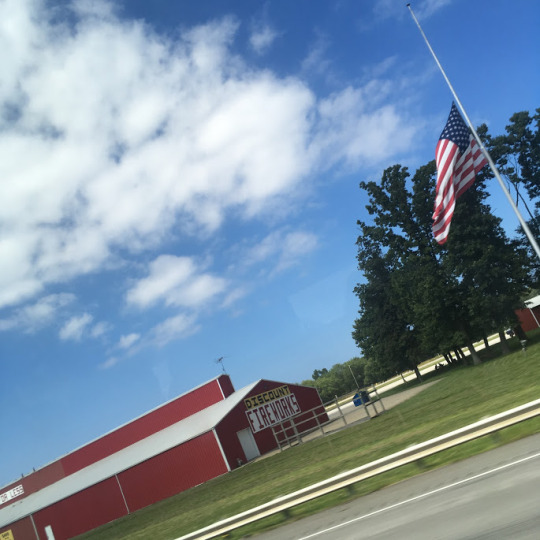
But it’s a beautiful country to travel in; the pastel tarmac, green fields, colourful outbuildings and blue sky...

In Kalamazoo, we check in at the Best Western (in true American fashion the rooms are obscenely huge and feature a kitchenette) and head straight out to the finest Italian this side of town: Erbellis!

We enjoy a round of radioactive Catalina Margaritas and contemplate the menu...
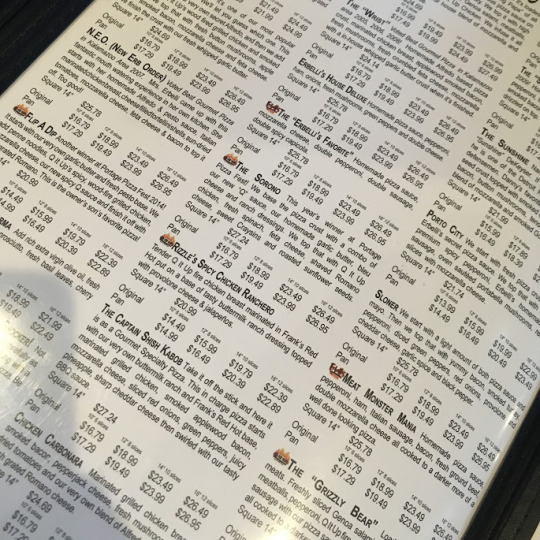
With easily hundreds of dishes to choose from there’s lots of contemplating to do and options include ‘Be Careful Not To Choke Pepperoni Shocker’, ‘Meat Monster Mania’ and ‘The Rhino’ which contains SEVEN different types of meat. (I can barely name seven different types of meat.)
I opt for the calmer sounding ‘The Greek’ (feta, tomatoes, olives etc.) on a Chicago style crust. What I’m presented with might be better described to an Englishman as a pie, only with pizza base instead of pastry and a topping of marinara sauce in place of the gravy. It’s as ambitious as it sounds and a more typically American experience than an authentic Italian one.

Nonetheless it’s an experience and in search of more of the same we head straight to the nearest bowling alley! Revel and Roll in Kalamazoo is a modern affair with half-price drinks and a scoring system that incorporates photographs of each players face into funny little animations between frames. It’s hilarious and a welcome palette cleanser after the gigs and travel so far.
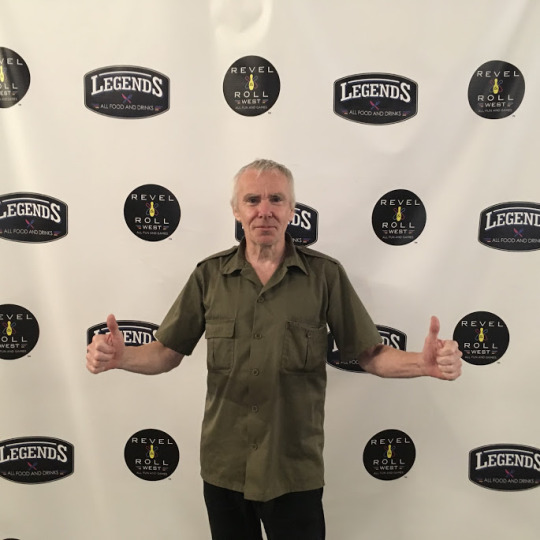
Tour manager and bassist Joe opens the strongest taking victory in the first game with a decent score of 125. It’s only a shame he couldn’t stay for a second as I know he would have been proud to witness my impressive followup: a courageous score of 128! Three whole points more than his 125! Thus I win overall, and beat his best score.
(I’m not saying that I like to gloat but I’ll admit I posted a printout of the scoresheet under the door of his hotel room...)
The following morning and riding high on the sweet taste of my bowling victory by three points (“The real winner here is bowling” I lie), we reconvene in the hotel lobby and drive into Kalamazoo centre for a spot of brunch (at the Studio Grill - classic American diner fare albeit lacking a huevos rancheros).
Our next stop is the very reason we even chose Kalamazoo as a destination in the first place. (It’s not the longest train curve in America, although I hear it’s a big pull.)
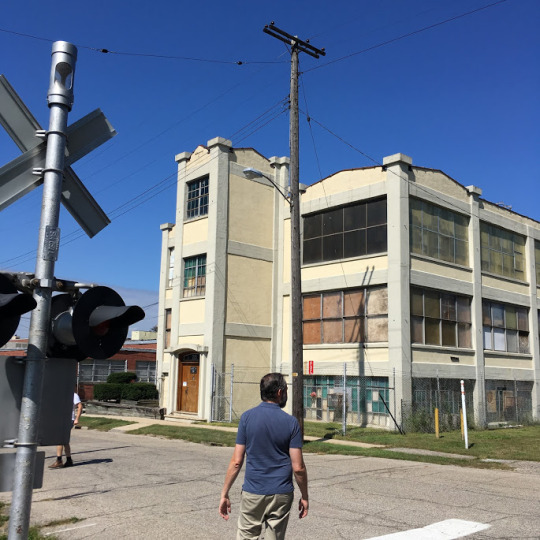
As many musicians know, Kalamazoo is the birthplace and spiritual home of Gibson Guitars! We drive a few blocks over to the original factory, located beside a railroad on the northeast side of town.
Orville Gibson founded the company here in 1894 and originally specialised in building mandolins. The Les Paul, 335, Explorer, Flying-V and SG all followed and in the 80’s, having inevitably outgrown this original facility, they relocated to Tennessee. The few employees who didn’t fancy the move stayed put, founded Heritage Guitars, and still operate out of a modernised portion of the original factory to this day.
The majority of the building is now abandoned and boarded up however. But despite the dilapidated appearance it doesn’t feel like a sad place and it’s magical to think of the great impact on rock ‘n’ roll - nay popular culture as a whole - that the instruments which have emerged from this factory have had.
Alas one of Michigans lesser-celebrated fames is the poor quality of its roads and the journey to Chicago is at best bumpy, and at worse skull-shaking. Eventually, with a final rattle and jolt, we cross the state line - pick up Central Standard Time, gaining an hour - and moments later pass by Michigan City itself ... which strangely happens to be in Indiana.
Entertainment on-route is provided by the billboards of the I-94, my favourites including one for a strip club (’All the liquor, none of the clothes’) and another for a vasectomy clinic (’Buy one testis, get the other free’).

Eventually we roll into the beautiful Park End West venue just as Via Chicago by Wilco finishes in my headphones - what could be more appropriate.
We played here on the last tour, I loved the venue then and I love it still. The crew are friendly and professional, the gear is great and the comfortable backstage is packed with fresh rider and cool beers. It’s the perfect venue to catch a gig too with room at the front for those who wish to stand and dance, booths in the middle with waitress service and stools up by the cocktail bar. I could happily bed down here for a year, get a job on the bar and befriend all the locals.

(Pic by James)
A few weeks back while playing Victorious Festival in Portsmouth with Gaz Coombes, I got chatting to one Paul Von Mertens. Paul is Musical Director and wind player with Brian Wilson and mentioned that he was from Chicago. We chatted for a while, I told him I’d shortly be in town with Saint Etienne and he said he’d love to come. True to his word he came to check out the show and was kind enough to regale us with tales of life on the road and in the studio with Brian, Wilco and many others. (Appropriately the title of the Good Humor album that we’re touring was inspired by a picture of Brian Wilson...)

The following day we spend traveling and our party takes a plane down to San Francisco ahead of our penultimate show of the tour at The Chapel. The route takes us over the Rockies and the view through the window is another mesmerising one. I’ve said it before but America is one beautiful country from the air…

While the Northeast, Deep South and Midwest of America all have their charms, none quite compare to California for me and in particular the sparkling vibrant glorious dazzling sunlight which comes beaming through the cabin windows as soon as we descend below the clouds.

We check in at the La Quinta Inn & Suites in South San Francisco and dive across to Denny’s - it’s busy on a Friday night but they now serve beer so the wait is bearable. James and I fancy a nightcap and fortunately there are drinkeries just a couple of blocks north. Unfortunately - given the American tradition of driving everywhere - they’re totally un-walkable so we have to take a 90 second Uber instead…
The Armstrong Brewing Company are a friendly bunch but their output doesn’t amount to much and we found only one of their 10+ beers vaguely palatable. Most of their creations lack subtlety and are often far too strong to be enjoyable, although they more than make up for it in friendly hospitality and are eager for us to stay even after closing time.
Show day in San Francisco! I’m on the hunt for huevos rancheros once again and have high hopes for California based on reputation, past experience and proximity to Mexico. Once in the Mission District I head to San Jalisco on the recommendation of some Saint Etienne fans. It’s certainly an authentic experience - the food isn’t paired down for our taste and half the clientele is Mexican. There’s even a guitarist who provides an authentic soundtrack, though he’s not exactly Santana. Thanks for the suggestion folks.

I walk off the large lunch around the streets of the Mission District enjoying the glorious Californian light with my film camera. I’m not the only one and when I stumble come across our venue for tonight I find an elderly gent wandering down the street bearing a very old looking 16mm camera. His name is Nathaniel Dorsky - I later learn a much celebrated experimental filmmaker who has exhibited his unusual silent films around the world. We both have a love for film and share an inspiring conversation right there on the street that will stay with me.

The promoter at The Chapel is charming and not only does the epic rider contain some swanky desert pieces (and later cocktails), she’s even brought her dog along to help out! Some of us also receive a generous gift from a fan called ‘Adam’. Wherever you are, whoever you are, Adam I thank you for the four bottles of aftershave. I smell sensational.
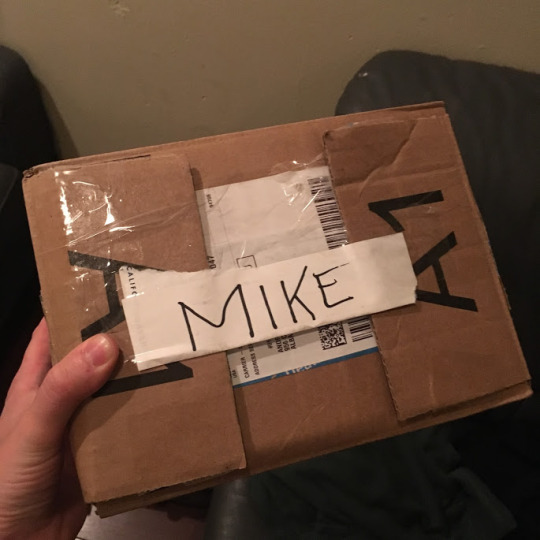
San Francisco is always a great show for Saint Etienne and tonight is no different. The venue is packed out and the stage time is put back on numerous occasions because half the audience are still queueing up at the merch stand. When we eventually make it out, the crowd are rabid and one eager fan (is it Adam?) leans over to chat, shake hands and generally hang between every song. Which would be much more welcome if I weren’t in the middle of an indie dance show...

As per last year’s Home Counties US Tour, our final stop is Los Angeles and the Henry Fonda Theatre on Hollywood Boulevard. It’s an easy journey down by air and we’re back at the 101 Coffee Shop on Franklin Ave in time for lunch.

Their huevos rancheros are probably my favourite on the tour too. The 101 was the diner that first turned me on to the dish and it’s fitting finale fare for the final day of the tour.

Chuck E Weiss is in the house too, favourite of Tom Waits and the muse to the classic Rickie Lee Jones song ‘Chucks E’s In Love’. Listen out for the iconic drum part from Steve Gadd...
youtube
Back to the Fonda Theater on Hollywood Boulevard. A familiar setting with a familiar crew, gear and backstage too. It’s a wonderful joyous gig and the crowd brings top energy to help us over the line.
As some may know, I periodically play drums with Gaz Coombes and as it happens a number of his band - including numerous VFTDS alumni - flew in this evening ahead of a TV appearance later in the week! The aftershow party was not just a celebration of the tour but also a reunion with familiar faces from both home and away. This Is Your Life!
Shout out also to Dan and Mike who not only attended the Chicago, San Fran and LA shows but did so in their homemade Home Counties suit jackets! Having seen them down the front every night it was great to finally meet them for a quiet and civilised chat...

While the rest of the gang head home (business class, naturally) I’m staying on in LA for a few days. Thanks for the good times USA! You’ve been great as ever. The gigs have rocked, the band has been great and the crowds buzzing with no exceptions.
I’m off to watch the Dodgers with some pals… see you soon!
Mike
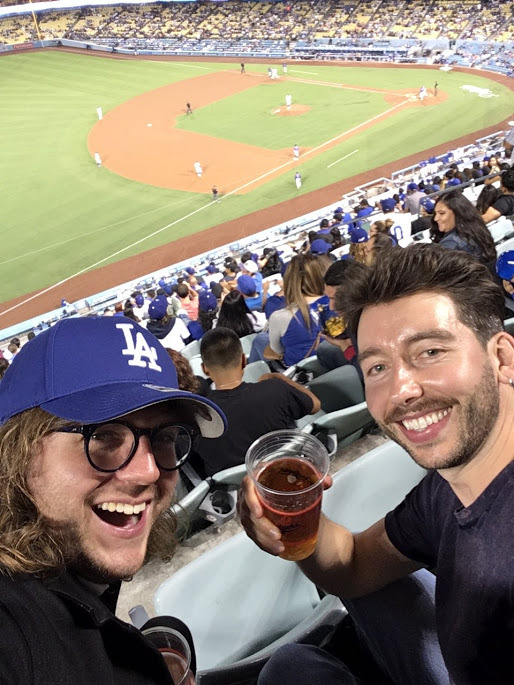
0 notes
Text
Los viejos vinagres
“Whoever doesn’t entertain any idle thoughts doesn’t throw any wrenches into the machinery”
Theodor Adorno, “The Meaning of working through the Past”
Chilean rock fans are wildly enthusiastic about Santiago Rock City, a festival which will take place on 29th and 30th September in Santiago with old pickled-in-vinegar names such as Guns n’ Roses, Aerosmith, The Who, Def Leppard, Marky Ramone and, L.A. Guns headlining the nostalgic party.
Nostalgia in the commodity form.
It is clearer than ever that developing countries such as Chile1 have become the favourite place for aged bands due to that diminutive enthusiasm shown by people in their own homelands. Iron Maiden, for instance, with their tour 2016 took in money $11,532,491 dollars in gross sales only in South America. In contrast they only collected $6,701,818 in North America (Canada and the US)2
The point here is that the more ignorant you are the easier to impress you become, especially by justifying entertainment for entertainment’s sake –art as a utilitarian function.
The average Chilean is timid, sceptical, short of self-esteem, herd-follower and not very creative due to the low standard educational system and the standardized production parameters. Lack of education and poor character has just ended in a gray ordinary man (very appropriate to power and large economic interests).
In a 500-point scale Chile got 220 points in literacy and 206 in numeracy, being located significantly below the average among 33 countries/economies3. Other South American nations do not differ mostly, thus it is not difficult to conclude how low people’s capacity to take part in a complex society is. Chilean economy has relied on copper exports for decades, and studies show4 that countries may become rich but no complex as a result of income based on extractive activities (which do not imply know-how). In other words, countries which are able to make products of high complexity (machines and appliances) are countries which own tacit knowledge5 and have the means to generate networks (which allow specialization) and share knowledge. Therefore, once the society has been educated and its access to an ample range of visual, auditory and dramatic expressions has been guaranteed the members of this community are able to participate in a more complex environment having the power to promote and execute higher forms of thinking.
Hard rock has never being a privilege of minorities, neither has it been a massive phenomenon such as Michael Jackson6. In many cases some hard rock/heavy metal albums have made real works of outstanding artistry. But artists, when tempted by earthly desires, vulgarize their art and enter into the dynamic of industry to become nothing but a piece of merchandise –the commodity form. Artists give up their principles by becoming part of the machine, and this series of actions –like a chewing gum masticated endlessly- wears away their oeuvre until dissolving into the status quo.
Companies do not attach importance to truth values, they just concern about how much profit they can get from record sales. Thus, artists’ anger is diluted to the category of a commercial.
Marcuse stated that “man can do more than the culture heroes and half-gods; he has solved many insoluble problems. But he also betrayed the hope and destroyed the truth which was preserved in the sublimations of higher culture” (Marcuse, 56). Yes, all comfort brought in by medical and technical development has allowed man goes through unconcerned unlike that man who, some years ago, went uncertainly thinking of if some possible firm conviction were possible in the near future7.
The best rock music was made between the 60s and the 80s, in an atmosphere absorbed by the Cold War when fear thawed in an atmosphere of hope and uncertainty. Bands existing as result of those glorious days have not disappeared as symbols of an era but their once subversive force and destructive content has been neutralized and managed (to make a profit).
Today I heard the last Venom Inc’s record –a crashing bore full of commonplaces that would stupefy Satan himself. It is not difficult to find out what these aging folk (and the machine) wish. On one hand there is a bunch of youngsters revelling in their early records waiting for a new “Welcome to Hell” while, on the other, record companies reform old names as a means to obtain financial advantages by making this bunch of aging men play rock (again) and make them believe they still can do it. Twenty years ago Steve Jobs reflected upon that: “when you’re young, you look at television and think, There’s a conspiracy. The networks have conspired to dumb us down. But when you get a little older, you realize that’s not true. The networks are in business to give people exactly what they want. That’s a far more depressing thought. Conspiracy is optimistic! You can shoot the bastards! We can have a revolution! But the networks are really in business to give people what they want. It’s the truth.”8
Thus, one does not know if laughing or run away when you see Axl Rose trying to look younger with his hair dyed, James Hetfield in a “I am still can do it” attitude or Kerry King developing substantial muscles to show a more normal level of firmness. It is true also that being old today is different than it used to be twenty or thirty years ago, but the problem is, on one hand, the regeneration of the social tissue: young bands are unable to succeed the old generation, and on the other, profit and consumption –deeply rooted acts inherent to the machine- collapsing any efforts that implies reflection. Who would have imagined some years ago Chilean banks offering tickets for the Santiago Rock City Festival using their credit cards or the most conservative Chilean newspaper advertising the event? O tempora! O mores!
When Joe Corre set fire to Sex Pistols’s punk clothes and paraphernalia two years ago he stated that “punk was never meant to be nostalgic. Punk has become another marketing tool to sell you something you don’t need.”9
Luis A. Benavides
1 Chile has a GNI income of around $16000 US dollars per capita (World Bank, 2016).
2 Billboard magazine. Quoted by Blabbermouth.net http://www.blabbermouth.net/news/iron-maiden-northsouth-american-concert-attendances-grosses-revealed, 20th April, 2016.
3 Organization for Economic Co-operation and Development, “OECD Skills Studies, Skills Matter, Further Results from the Survey of Adult Skills,” 2016, Snapshot of performance in literacy, numeracy and problem solving , figure 1.1, pp.24
4 Hausmann, Ricardo; Hidalgo Cesar; Bustos, Sebastián; Coscia, Michele; Chung, Sarah; Jimenez, Juan; Simoes, Alexander; Yıldırım, Muhammed A. “The Atlas of Economic Complexity – Mapping Paths to Prosperity” The MIT Press, January 2014, pp.15, 25, 27
5 Tacit knowledge refers to specific knowledge which is acquired through devote time and attention (fix dental problems, speak a foreign language, learn to compose essays). Tacit knowledge is what compels the process of growth and development. Tacit knowledge explains differences in prosperity in different countries. (Hausmann, Hidalgo et al., 16)
6Let us be very careful here. Some bands such Metallica and AC/DC have become real best sellers by softening their productions over the years (Metallica) or simply for becoming mainstream (AC/DC). See “The 50 best-selling music artists of all time” 13th
September, 2017,
http://www.businessinsider.com/best-selling-music-artists-of-all-time-2016-9/#50-phil-collins-335-million-units-1
7 “When you’re young like that and you’re partying and playing you don’t expect to live that long, not because you wanna die, it’s just that you think that this can’t possibly go on for too long” stated Motorhead’s Larry Wallis.
8Wolf, Gary. “The Next Insanely Great Thing”, Wired magazine, 1996,
https://www.wired.com/1996/02/jobs-2/ . Accessed 22nd September 20179
“Sex Pistols Manager’s Son Burns Punk Memorabilia Worth Millions.” Huffington Post, 26th November 2016, http://www.huffingtonpost.com/entry/sex-pistols-burn-memorabilia_us_583a275ae4b01ba68ac4beae
Other sources
Marcuse, Herbert. “One-Dimensional Man: Studies in the Ideology of Advanced Industrial Society, 2nd Edition 2nd Edition”, Beacon Press; 2nd edition , 1st October, 1991, pp. 56
#stgorockcity#futuro#punk rock#rocknroll#earache#officialthewho#aerosmith#gunsnroses#defleppard#laguns#venom_inc
0 notes
Text
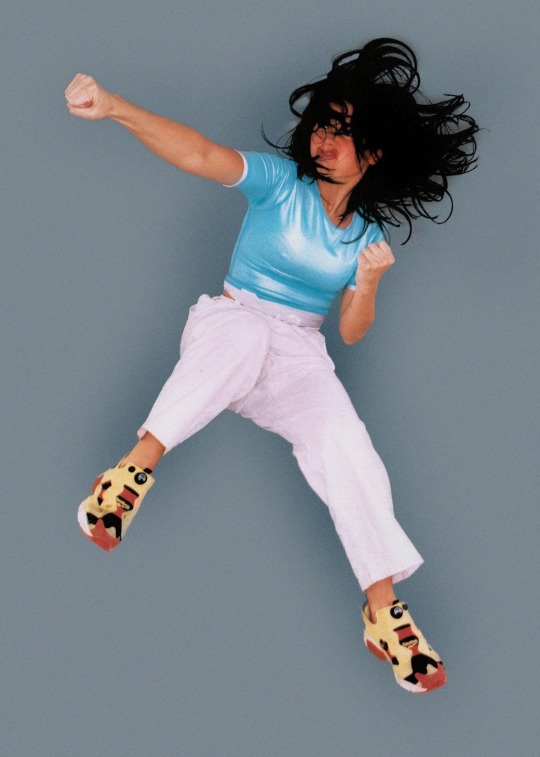

Björk for Rock & Folk n°335 (1995) Photography: Jean-Baptiste Mondino
365 notes
·
View notes